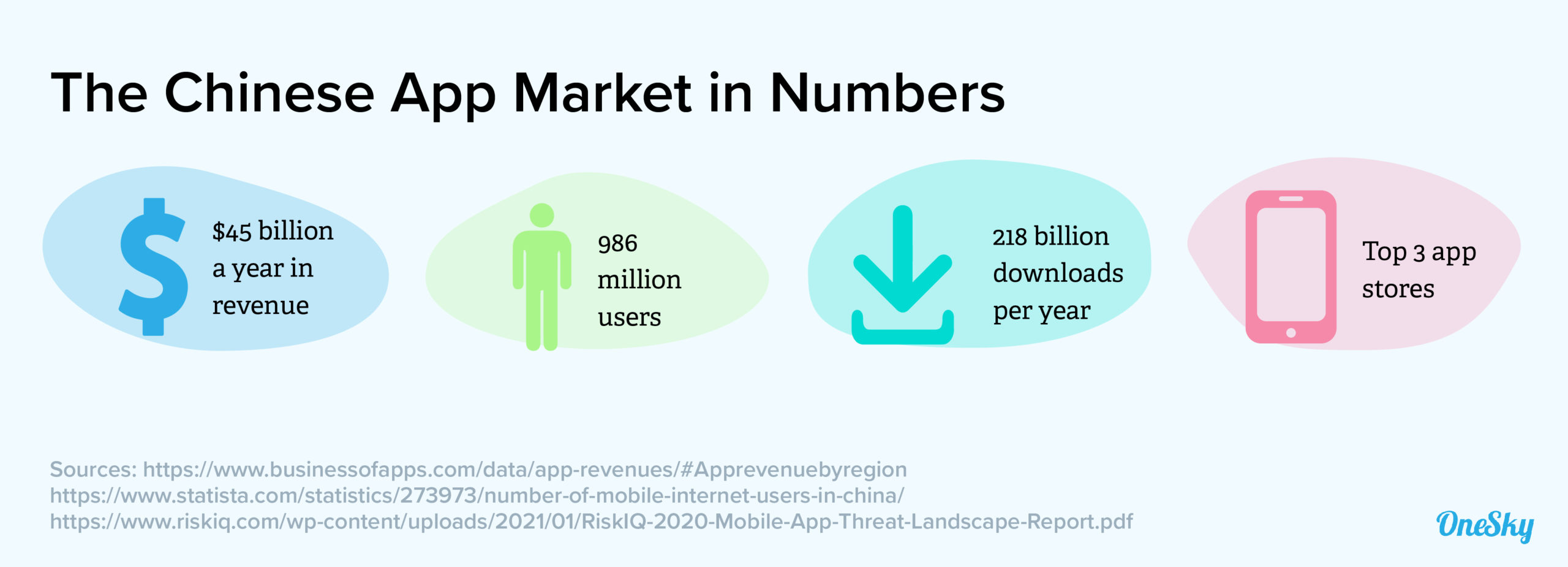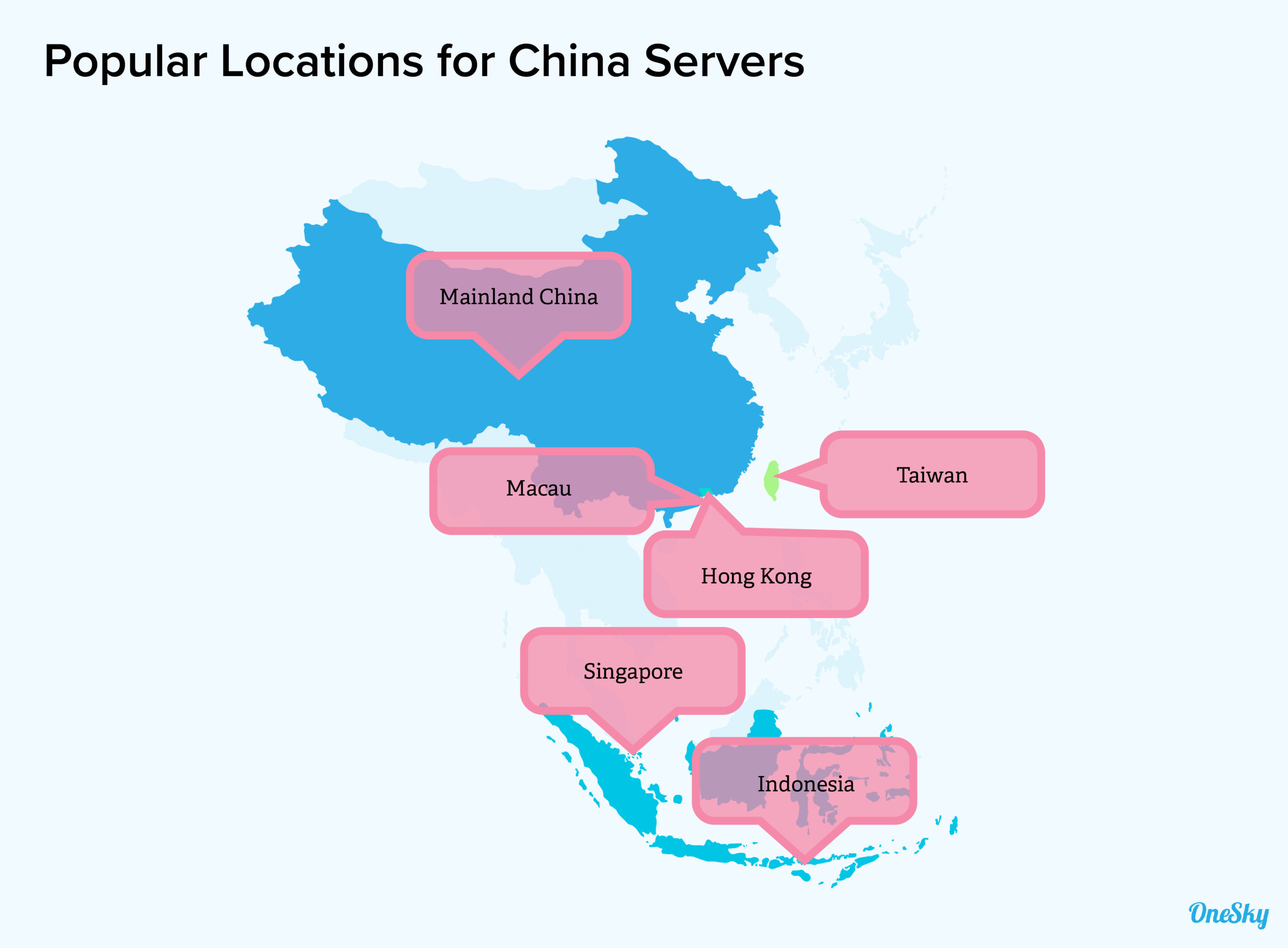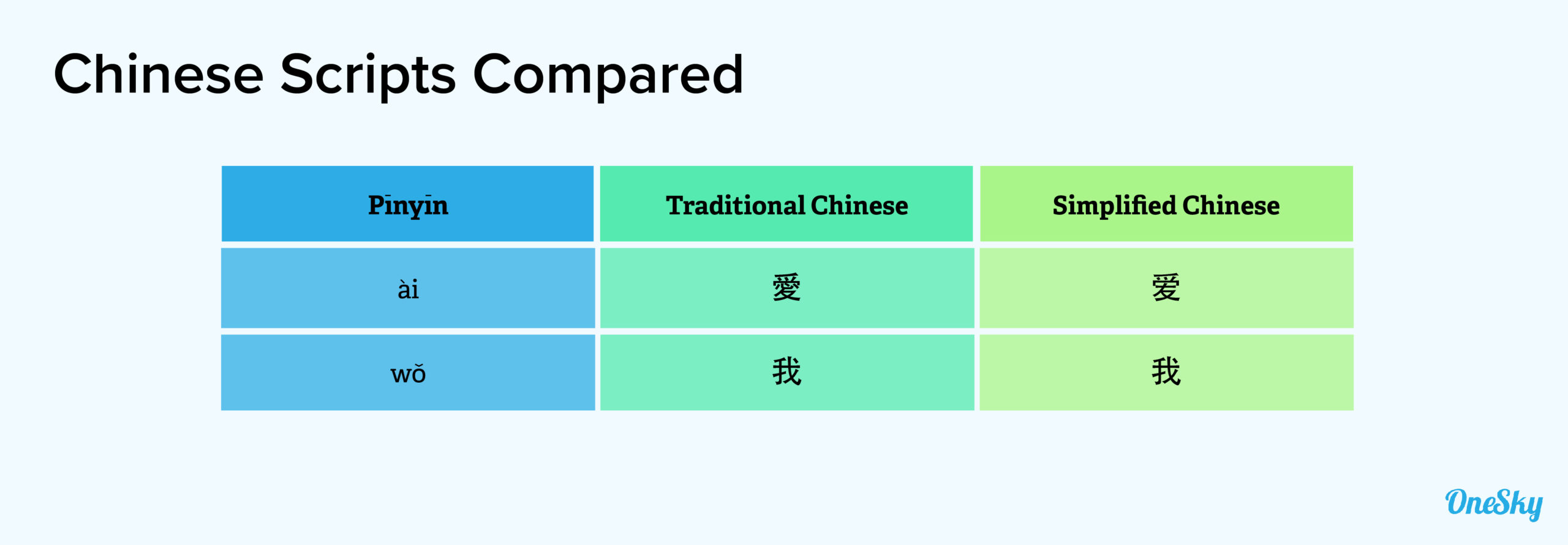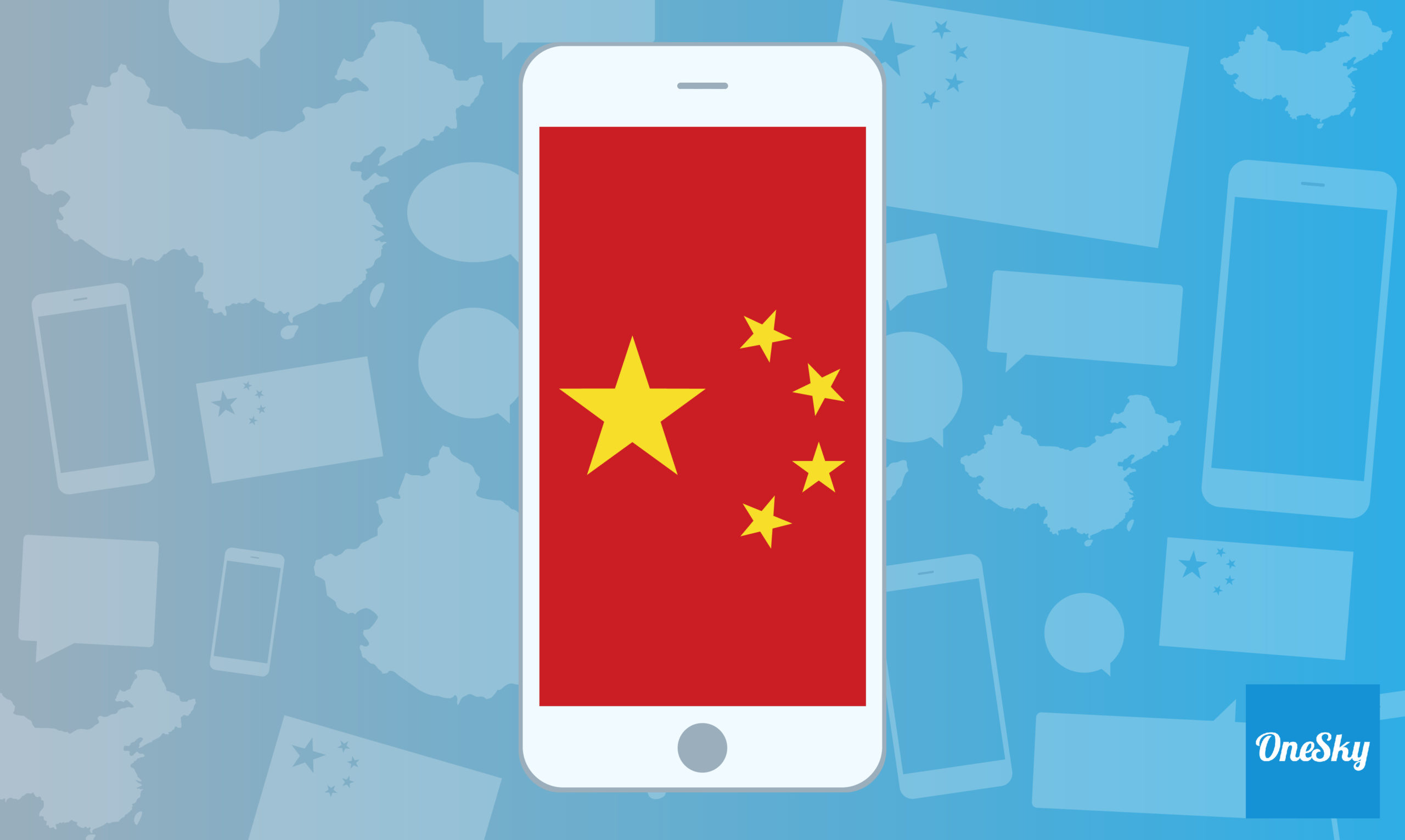App Localization for China: How to Succeed in the World’s Biggest Market
In the West, app developers usually focus on the English-speaking market. It is one of the biggest, after all. But not the biggest. That accolade is held by China.
The Chinese market is very different from anything we see in the Americas or Europe. This is partly about language, and very much about culture. But for developers who manage to bridge the gap, potential riches await.
If you are wondering whether to launch in China, and how to prepare your app, this guide has all the answers you need.
Why China Is a Potential Gold Mine for App Developers
If you go by gross domestic product, only the United States has a bigger economy than China. Unsurprisingly, this wealth translates into the world of technology.
Data from the Business of Apps shows that China dwarfs every other region when it comes to revenue from apps. In 2020, the figure was an incredible $45 billion.
That’s 40% of total global spending on apps. Not bad for a country where the Google Play Store is banned.
However, this is just the headline figure. When you dive into the details, the opportunities presented by the Chinese market become even clearer:
There are 986 million smartphone users in China (Statista)
That is almost one-sixth of the global total.
Chinese users made 218 billion app downloads in 2020 (RiskIQ)
In comparison, U.S. users only managed 142 billion in the same year.
The top three app stores in the world come from China (RiskIQ)
The big names are Apkgk, Apkpureco, and Androidappsapk.
Online ads in China will generate $183 billion by 2023 (iResearch)
It will soon overtake traditional advertising revenue.
As these stats prove — if you have already launched a successful app in your home market, the Chinese market offers an incredible avenue for growth.

What Type of Apps Do Well in the Chinese Market?
Just as China has a very distinct culture, the app market there has some unique quirks.
By far the most popular apps in the region are social and messaging apps. However, almost all of these apps come from native developers. You won’t find WhatsApp installed on Chinese smartphones; it’s all about WeChat in this part of the world.
For Western developers, gaming offers more opportunities. This is a very popular category in every Chinese app store, and some titles from foreign developers gain traction. Note that the most successful imports are always localized for the Chinese market.
Other categories that have excellent penetration include video entertainment and personal finance, particularly payment apps.
It’s also worth analyzing the popularity of different categories by platform. In China, iOS is the preferred platform for the middle class and the wealthy. As such, iPhone users often download apps for fashion, online shopping, and music. Basically, the finer things in life!
In contrast, Android is the everyman platform, with a market share of over 80 percent. While the Google Play Store is missing, other app stores see high downloads in video entertainment, photography, and navigation.
7 Principles for Successful Chinese App Localization
With these key facts in mind, you may already have started thinking about your future launch in China. Before you dive in, make sure to study these important principles for success.
1) Consider Whether Your Product Is a Good Fit for China
When you read through all the headline figures, launching in China seems like a no-brainer. But when you consider that Google, Amazon, eBay, and Uber have all tried and failed to conquer this market, you realize that it’s probably harder than it seems.
Whenever you try something new in business, it’s a good idea to think about what your target audience actually wants. In the case of China, that means thinking about a multitude of cultural factors. Ask yourself:
- Does my app fit with the Chinese lifestyle?
- Are there any strong local competitors?
- Are Chinese users willing to pay for my service?
If the answers you come up with are positive, you can start working on a strategy.
2) Get Some Local Infrastructure
In the West, we are used to the idea of using online services from around the world.
In China, the government prefers to keep a tighter grip on data. In a sense, the entire country is wrapped inside a giant firewall.
For this reason, it’s really important to get some local hosting. Without taking this step, Chinese users are likely to be disappointed with the performance of your app.
National laws in China prohibit foreigners from having direct access to servers, so you will need to work with a local partner.
If you really don’t want to go down that route, your next best option is to find a server outside mainland China, but in the same region. Popular choices include Taiwan, Singapore, Hong Kong, Macau, and Indonesia.

3) Make Your App Less Data-Hungry
China is a very tech-savvy country. You won’t find many people checking emails on battered old laptops — this is a nation of smartphone users. In spite of this, most mobile plans do not offer unlimited data.
If you are planning to optimize your app for the Chinese market, consider offering offline downloads. This is a popular feature with users, who have to conserve their allowance each month.
Reducing the size and data use of your app will also make it more accessible for people who live in rural areas, where network speeds are not as fast.
4) Know Your Scripts: Traditional Chinese vs. Simplified Chinese
As you may be aware, China uses a writing system that is different from that of any Western culture. Chinese characters represent entire syllables, and they are generally much more complex than Latin or Cyrillic letters. In addition, there are more than 20,000 individual characters in regular use.
To make matters even more complex, there are two different scripts in use today: Traditional Chinese and Simplified Chinese.
As the name implies, Simplified Chinese characters are slightly less complicated than Traditional characters.
Simplified Chinese is now the preferred script in mainland China and Singapore. However, users in Taiwan and Hong Kong still prefer Traditional Chinese.
It’s a good idea to support both scripts in your localized app. But if you can’t, be sure to select the right script for your target audience.
The joker in the pack is Pinyin. This is a romanized version of Chinese scripts that uses characters from the Latin alphabet in place of pictorial characters. Most Chinese today like using Pinyin when typing, because it’s generally faster to tap keys than to draw shapes.

5) For Audio and Video Content, Use Mandarin and Cantonese
Your choice of scripts will take care of all the text within your app. But when it comes to audio and video content, you will need to choose a spoken language (apart from for the subtitles!).
There are hundreds of languages spoken in China. However, the majority of the population uses a handful.
Mandarin is the official language of China (and Taiwan), so this is an obvious place to start. Recent estimates suggest that around 64% of the population speak the language.
Another popular language is Cantonese, which is used heavily in parts of southeastern China, along with Hong Kong and Macau.
In most cases, providing Mandarin content will be sufficient. You would only need to expand your offering if you: (a) want to reach the widest possible audience, or (b) want to connect with users in specific regions.
5) Make Sure to Adapt Your Interface
Localizing your app for any region usually involves making a few tweaks to your interface. However, China requires a whole new level of optimization.
Before you even consider layouts and colors, you need to adapt your app for your chosen script. Chinese words and phrases take up around 30% less space than their English equivalent, so you may end up with some space to fill.
Speaking of space — Chinese users don’t really care for the clean, minimal look. The most popular apps in China are densely packed with features, badges, notification icons, and a whole lot more. If you want to compete, your app needs to be equally full to the brim.
Another really important consideration is your color scheme. Different hues have real cultural significance in China, so you need to choose your design with care.
6) Optimize Your Features
While it’s not necessary to completely change the functionality of your app for a Chinese audience, it’s worth adapting certain areas.
For example: any social features in your app will break in China. You will need to replace them with local equivalents — WeChat instead of Facebook and WhatsApp, Sina Weibo instead of Twitter, and so on.
Geolocation can be found in most popular Chinese apps. If your product does not yet have this feature, consider adding it. The same can be said for chat functionality and payments.
One other feature you may wish to add is support for QR codes, which are used widely throughout China.

7) Target Multiple App Stores
In the absence of Google, more than 400 third-party app stores currently operate in China. As mentioned earlier in this guide, some of them are genuinely massive.
When building a strategy for your Chinese launch, consider which stores you are going to target, and study the competition. Try to get your app into several of these platforms, at least.
Why You Should Hire Experts for Chinese App Localization
Optimizing your app for a new language or culture is always a considerable project.
By now, you may be starting to realize the scale of the transformation required for success in China. From data laws to the number of characters in your interface, there is a lot to think about — and we haven’t even touched on the subject of translation yet.
But don’t be put off. Many developers have succeeded before, and you have every chance of following in their footsteps.
The key is to work with the right people.
Professional linguists can translate content with precision and help you to strike the right tone for a Chinese audience. Meanwhile, good localization experts can help you to understand cultural factors and navigate technical implementation.
Just as importantly, working with specialists usually unlocks dedicated tools for managing the process.
Take Your App to China With OneSky
Ready to take your first steps towards launching in China? OneSky is probably your best option.
Our end-to-end platform plugs straight into your development workflow, meaning you can extract your existing content with ease. You can then order professional translation with a couple of clicks, adding reviews and on-device testing as required. Our 1,000 localization experts have extensive experience of adapting mobile apps and games.
OneSky also works as a translation management system, with a glossary and translation memory. This makes it really easy to update your Chinese content.
Sign up free today to give it a try, and download our free ebook to learn more about localization.



 Written by -
Written by - 


 Written by
Written by 


